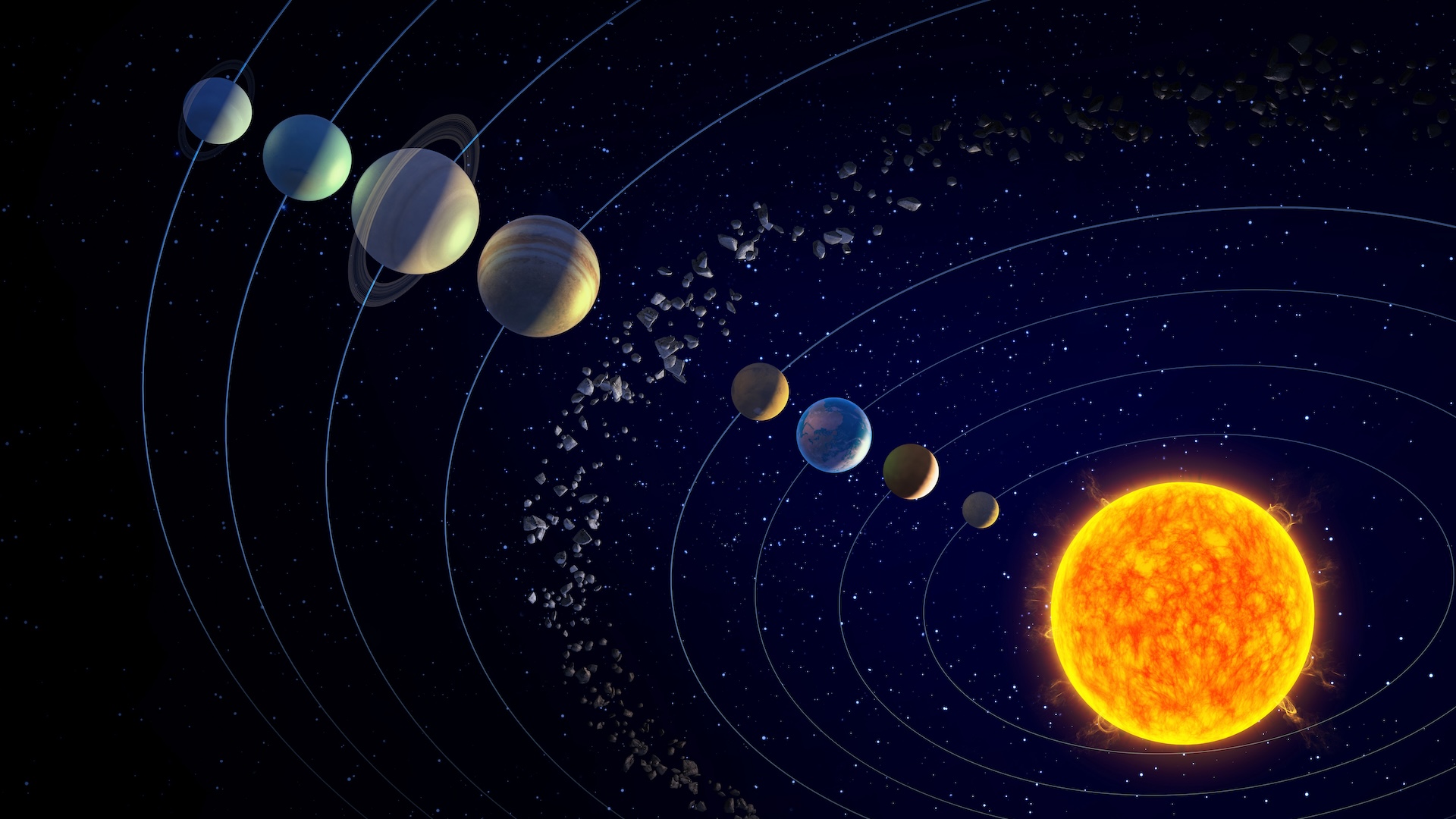
Every year, Earth follows a familiar pattern of seasonal changes: As summer rolls around in the Northern Hemisphere, winter creeps in in the Southern Hemisphere, and vice versa.
But do other planets have seasonal patterns, too?
Indeed, other planets, dwarf planets and moons in our solar system do have seasonal cycles — and they can look wildly different from the ones we experience on Earth, experts told Live Science.
To understand how other planets have seasons, we can look at what drives seasonal changes on our planet. "The Earth has its four seasons because of the spin axis tilt," Gongjie Li, an astrophysicist at Georgia Tech, told Live Science. This means that our planet rotates at a slight angle of around 23.5 degrees.
So, when Earth is on one side of the sun, the Northern Hemisphere is pointed toward the sun and the Southern Hemisphere is facing away, explained Shane Byrne, a planetary science professor at the University of Arizona. When our planet moves to the other side of the sun six months later, the Northern Hemisphere faces away.
Related: Is Earth the only planet in the solar system with plate tectonics?
Mars has an axial tilt of around 25 degrees. Because this value is so close to Earth's tilt of 23.5 degrees, the amount of seasonal variation on Mars is similar to our planet's.
Get the world’s most fascinating discoveries delivered straight to your inbox.
"Just like on the Earth, you have permanent darkness and permanent daylight at the polar areas, depending on whether you're in the winter or the summer; then you can flip between those two states every half a year," Byrne told Live Science. But interestingly, instead of water-based ice, winters on Mars are dominated by carbon dioxide ice (or dry ice), which can form spidery cracks on the surface on the planet.
In contrast, some planets in our solar system have massively different tilts, leading to more extreme changes throughout the year. For instance, Mercury has no tilt, so "there's almost no seasonal change at all," Byrne said. On the opposite end of the spectrum, Uranus has a 90-degree tilt, so the poles are either completely facing the sun, or not at all, meaning its seasons are intense: Summers are filled with long stretches of constant blazing sun, while winters plunge into perpetual chilling darkness.
But tilt isn't the only factor that drives seasonal changes. The shape of a planet's orbit can also influence seasonal variations in weather. This is because planets' orbits tend to be ellipses, rather than perfect circles. As a result, some planets are sometimes very far from the sun and very close to it at other times. For example, Mercury has an "eccentric" orbit, which contributes to its seasonal variations, Li said. Pluto, too, has a very elliptical orbit that pushes its variations to an extreme, Byrne said.
These two factors — a planet's tilt and the shape of its orbit — can also change over time. Byrne, who studies climate records on Mars, explained that the tilt on the Red Planet wasn't always 25 degrees. In fact, models, published in the journal Earth and Planetary Science Letters in 2018, have shown that Mars's tilt has varied from 10 to more than 40 degrees over the course of billions of years. This has led to extreme fluctuations in the planet's yearly cycle.
"So it's almost just random chance that it happens to be similar to the Earth today," Byrne said.
"On Earth, we're very lucky, this spin axis is quite stable," Li said. Due to this, we've had relatively stable seasonal cycles that have persisted for millennia, although the broader climate sometimes shifts as the entire orbit of Earth drifts further or closer from the sun.
Such stability has likely helped life as we know it develop here, Li said. Scientists like her are now studying planetary conditions and seasonal changes on exoplanets to see whether life could exist in faroff worlds. For now, it seems as though the mild seasonal changes and stable spin tilts on Earth are unique.
Solar system quiz: How well do you know our cosmic neighborhood?

Alice Sun is a science journalist based in Brooklyn. She covers a wide range of topics, including ecology, neuroscience, social science and technology. Her work has appeared in Audubon, Sierra, Inverse and more. For her bachelor's degree, she studied environmental biology at McGill University in Canada. She also has a master's degree in science, health and environmental reporting from NYU.
You must confirm your public display name before commenting
Please logout and then login again, you will then be prompted to enter your display name.



